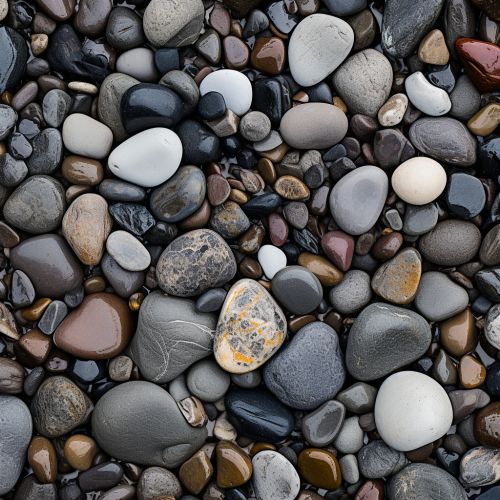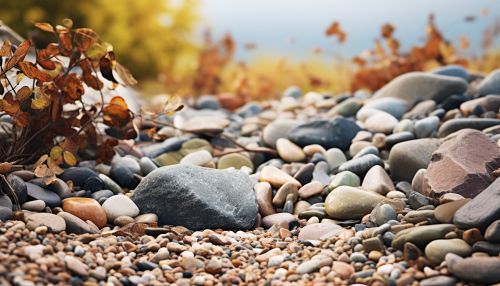Glacial till
Introduction
Glacial till, also known as boulder clay, is a type of unsorted, unstratified sediment that is deposited directly by a glacier. It is composed of a heterogeneous mixture of clay, silt, sand, gravel, and boulders ranging widely in size and shape. The composition of the till reflects the geology of the terrain that the glacier has traversed.


Formation
Glacial till is formed when a glacier moves over an area, eroding the underlying rock and other material and incorporating it into the ice. As the glacier moves, it grinds the material against the bedrock, breaking it down into smaller pieces. This process, known as glacial erosion, results in a mixture of rock fragments and fine-grained particles that are carried along with the glacier.
When the glacier melts or retreats, the material is deposited as till. The deposition of till is known as glacial deposition. The till is typically unsorted and unstratified, meaning that it contains a mixture of different sizes and types of material that are not arranged in layers.
Types of Till
There are two main types of glacial till: lodgement till and ablation till.
Lodgement Till
Lodgement till is deposited as a glacier slides over the ground. The pressure at the base of the glacier causes some of the ice to melt, and the water acts as a lubricant, allowing the glacier to slide. As it moves, the glacier plucks material from the underlying rock and incorporates it into the ice. This material is then deposited at the base of the glacier, forming a layer of till.
Ablation Till
Ablation till is deposited when a glacier melts. As the ice melts, the material that was frozen within it is released and deposited on the surface. This type of till is often found on the surface of a glacier or at its terminus.
Characteristics
Glacial till is characterized by its lack of sorting and stratification. It contains a mixture of different sizes and types of material, from fine-grained particles to large boulders. The material is not arranged in layers, as it would be in sediment deposited by water.
The composition of the till reflects the geology of the terrain that the glacier has traversed. For example, a glacier that has moved over an area of granite will deposit till that contains a high proportion of granite fragments.
The texture of the till can provide information about the movement of the glacier. For example, till that contains a high proportion of rounded, polished stones may indicate that the glacier has moved over a long distance, while till that contains a high proportion of angular, jagged stones may indicate that the glacier has moved over a short distance.
Distribution
Glacial till is found in areas that have been covered by glaciers, both in the past and in the present. It is a common feature of the landscape in parts of North America, Europe, and Asia that were covered by the great ice sheets during the last Ice Age. In these areas, the till forms a blanket over the underlying rock, often several meters thick.
In mountainous regions, glacial till is often found in valleys where glaciers have carved out the landscape. The till is deposited as the glacier retreats, filling in the valley floor.
Importance
Glacial till is of great importance in a number of fields, including geology, geography, and soil science.
In geology, the study of till can provide valuable information about the movement and behavior of glaciers, as well as the geology of the areas they have traversed.
In geography, till is a key component of the landscape in many parts of the world, influencing the shape and form of the terrain.
In soil science, till forms the parent material for many types of soil. The composition and texture of the till can have a significant impact on the properties of the soil, including its fertility and water-holding capacity.
